
|
|
 |

|


|
Panasonic DMP-BD70VK Review
Combination Blu-ray & VHS Player, $399

Dick De Jong Introduction
Writing about the DMP-BD70VK, I feel that I am being sucked into a time warp. On one side of the machine resides an up-to-the-moment, state of the art Blu-ray player. Its trademarked VieraCast feature furnishes links to Internet content providers like YouTube, Amazon Video On Demand, Picassa and Bloomberg Television. On the other side of the machine, literally, is a VHS player. Yes, you heard me, an oh so last century VHS player. "Let's do the time warp again!" I don't want to be too dismissive about this golden oldie. I imagine that many of you still have a collection of VHS tapes that you are not ready to donate to Goodwill. And the DMP-BD70VK serves as a great bridge between the videotape past and the Blu-ray disc present. Even though this player will upscale your video cassettes, don't get too excited. As a format, VHS was always considered a step below true standard definition. No amount of video processing will ever transform those tapes into pristine looking HD content. Also, the DMP-BD70VK is a combination Blu-ray and VHS player and does not offer recording capabilities. But the unit can play tapes recorded in the S-VHS format. As a Blu-ray player about the only component that it doesn't include is a set of 7.1 analog audio outputs. That aside, its performance and feature set position the DMP-BD70VK comfortably in the realm of top-end Blu-ray players. Blu-ray Player Primer
Blu-ray disc players were introduced in 2006. Since then, their specifications have evolved through three classifications, (Profile 1.0, 1.1 and 2.0). Profile 1.0 provided playback and basic interactive features. Profile 1.1, (also called BonusView), players added the capability for displaying Picture-in-Picture (PIP) and playing secondary audio tracks available on BonusView discs. 
After October 31, 2007, all new Blu-ray players had to offer all the features in Profile 1.1. BD-Live (Profile 2.0) players must have an Ethernet port for connecting to the Internet, where it can download online content associated with BD-Live Blu-ray titles. Out of the Box
To accommodate the two trays - you don't know how strange it is for me to see that VHS logo after all these years - the DMP-BD70VK is one of the largest Blu-ray units that I have encountered. 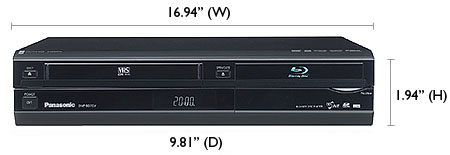 The 8.6 pound box sports a matte black finish except for the glossy bottom half of the front. Below the Blu-ray tray on the right is a flip down door that reveals three operational buttons, a USB port and a SD card slot. 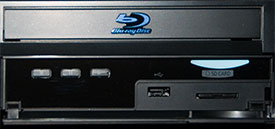
The USB port will read flash drives with MP3 music files or JPEG photos. It does not deal with video files. The SD card slot will accept SD and SDHC cards. You can also use MiniSD and microSD cards with their adaptors. It will read JPEG photos and AVCHD and MPEG2 video formats, but no music files. To access BD-Live online content, a Blu-ray player requires memory. Some manufacturers integrate memory into the machine. Panasonic does not and it does not include an external memory drive in the box. You will need to buy your own. Unlike many players that use USB flash drives for the BD-Live memory, the DMP-BD70VK employs SD cards. The minimum memory requirement for BD-Live is 1GB and you can buy SD cards that size for under $10. Which begs the question of why didn't Panasonic simply include one. On the back, the connection panel supplies one HDMI out, one set of Component Video (YPbPr) outs, a Composite out, a pair of Audio stereo outs, and an optical Digital Audio out. (In the photo below, the yellow slash indicates where the middle of the back of the player has been cut away.)  The DMP-BD70VK internally decodes advanced audio formats including Dolby Digital Plus, Dolby TrueHD, DTS-HD High Resolution, and DTS-HD Master Audio. When connected to your home network through the LAN port, the DMP-BD70VK links to the Internet content providers through the VieraCast interface, which I found surprisingly easy to use. 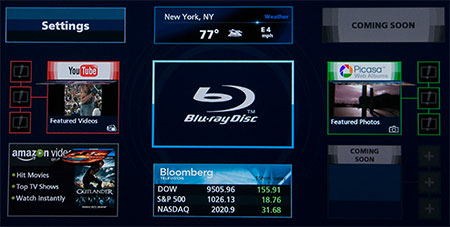 Perhaps the biggest boon, especially to the Tweeting generation, is the ability to enter text on the remote control's number pad like you would when you are messaging on a telephone. This might sound like an obvious method, but with every other widget based service that I have tried, you often have to hunt and peck on a virtual QWERTY keyboard. Since I subscribe to Netflix, I would like to see them included as a provider. But Amazon Video On Demand offers an extensive library of over 40,000 movies and TV shows that you can rent or buy and stream directly to your HDTV through VieraCast. 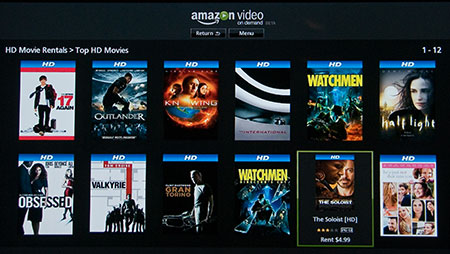 If you are planning on streaming videos from Amazon or YouTube, then make sure that your Internet Service Provider is supplying you ample bandwidth, with download speeds of at least 2.5 Mbps. Over 5 Mbps would be better if you want high quality streaming, especially from Amazon. Picassa is a great online venue for amateur and professional photographers to see and be seen. 
If you are a shutterbug, you can read JPEGs from either a USB drive or an SD card. The DMP-BD70VK's Picture View interface is good-looking, but I wish that the Slideshow provided more than the three Display Intervals (Short, Normal and Long) and a few more Transition Effects. Though they do include the one essential, a Fade. The remote control is not backlit, but the numbers and lettering on the buttons are in a bright white that makes them so much easier to read. The remote is not that large and the layout is a little crowded. If you have pudgy fingers, it may present a bit of a problem. For the most part, the manual is well-written and informative, which is essential because the DMP-BD70VK offers a lot of features that you may not be familiar with. I found myself cracking open the manual more than usual. I would suggest that you at least skim it before you set up the player. Power Consumption
The EPA is now publishing a list of ENERGY STAR qualified TVs. (You can find it here.) But the EPA is still in the midst of setting testing procedures for the ENERGY STAR Audio/Video Specification, which includes devices like Blu-ray players and AV receivers. It probably will take awhile longer before the EPA generates a list of ENERGY STAR qualified Blu-ray players, therefore, we took our own set of power consumption readings. To measure power, we hooked the DMP-BD70VK up to our watt meter, called Watts up? Pro, and took a reading during playback of a Blu-ray movie and another in standby mode. During playback of a Blu-ray, the meter stayed in the 15.4 to 15.5W ballpark. Playing a VHS, the reading ran between 17.4 and 17.8W, which is similar when streaming a YouTube video. Displaying the VieraCast interface took about 16.1W. These readings are comparable to most of the other Blu-ray players that I have reviewed lately. In the manual, Panasonic states Power Consumption at 29W (Approx.). When I turned the power off, the meter dropped to 0, which is good since the player will be off most of the time and it doesn't need to suck any electricity. Setup
Once again, I suggest that as soon as you pull this or any other Blu-ray player out of its box, that you check for a firmware update. The DMP-BD70VK makes the process fairly easy if you have it connected to the Internet. For some Blu-ray players, you don't really need to network them, especially if you don't plan on downloading BD-Live content. But with this Panasonic, you are missing out on a lot of bonus material if you are not hooked up. The procedure is straightforward. You simply run a cable from your router to the LAN port on the player. For most, the network setup is a matter of clicking a couple of buttons on the IP Address/DNS Settings menu. 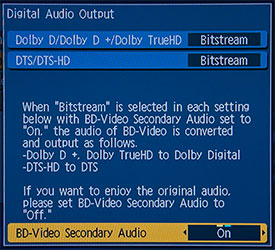
Perhaps the trickiest part of setup is selecting from the various audio options. The manual does an OK job of explaining the choices. One of the gotchas is the Secondary Audio feature. If your equipment can take advantage of the HD audio formats like DTS-HD, then you will need to turn Secondary Audio off. But if you plan to listen to the audio track on BonusView picture-in-picture content, Secondary Audio needs to be On. The rest of the setup is less confusing, but Panasonic has definitely packed in a lot of features on this player, therefore I suggest that you keep the manual handy. For example, some menus are accessed with buttons with unfamiliar names. To select what source that you want to play, you hit the Functions button. From there, you pick Blu-ray, Network, SD, USB or VHS. 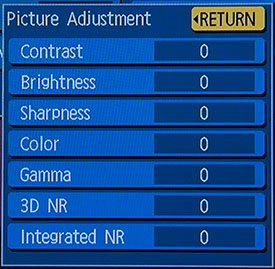
For those tweak jockeys, Panasonic provides a host of picture and audio adjustments that you can pull up on-screen while content is playing. I almost missed this toolset because it is pops up when you click the Display button. Depending on the source, the available options will vary. With video material, you can select from five different Picture Modes: Normal, Soft, Fine, Cinema and User. If you pick User, then you can open the Picture Adjustment menu. There are also Audio adjustment settings like Virtual Surround. Though the manual advises, "Do not use in combination with sound effects on other equipment." I agree. My rule of thumb is to keep it simple. When making either video or audio adjustments, fine tune the TV first. If you are still not satisfied, then tweak the Blu-ray player. Performance
With high-end Blu-ray players like the DMP-BD70VK, superior high quality playback of Blu-ray discs is a given. Blu-rays simply look and sound great. This Panasonic even deftly handled the more prickly Blu-ray discs that I have encountered recently, like the troublesome Maximum Movie Mode on the Director's Cut of the Watchmen. Kudos to the DMP-BD70VK. The upconversion of standard definition DVDs looks just dandy. But if you still think that "there is no difference between SD and Blu-ray DVDs," pop one of each in to this player and say that to me with a straight face. 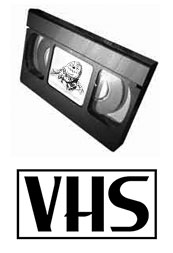
Now, about VHS tapes, let me confess that I have had a long history with videotapes going back before the VHS and Betamax war. I would say it was a Love/Hate relationship, but over the years Hate or at least strong dislike became the prevailing sentiment. So I'm not unbiased. And about the only commercial VHS tapes I have left are the eight volume boxed set of the Beatles Anthology, which I have never had an opportunity to watch since they were given to me. When I popped Volume 5 in the deck, a cold pall shivered down my spine as I recalled all the tapes that were chewed up in various VCRs over the years. (Is there any wonder why I don't like this medium?) The tape began to play. The colors were washed out, the image blown up to 47" was soft, tracking artifacts were skipping along on the bottom of the frame. Ah, the joys of VHS. This is a version of video Humpty Dumpty - all the Panasonic engineers and all the video processors cannot put poor VHS back together again. But I will admit, after my initial videophile snobbish reaction, I settled in and enjoyed watching the lads playing before the screaming throng at Shea stadium. Though I kept thinking in the back of my mind, this Anthology would look and sound great re-mastered on Blu-ray. 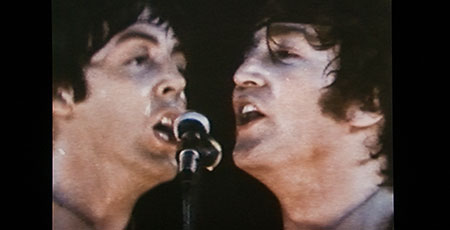 I'm not so hardened that I can't appreciate that many people still value their VHS tapes. And if you are one, then the DMP-BD70VK will do them the justice you feel they deserve by making them look as good as possible. As for audio performance from Blu-ray discs, the advanced formats (Dolby Digital Plus, Dolby TrueHD, DTS-HD High Resolution, and DTS-HD Master Audio) are only output through the HDMI cable. If you don't have an A/V receiver that accepts HDMI, then you will need to settle for signals like Dolby Digital EX and DTS-ES. To reiterate, the DMP-BD70VK does not furnish 7.1 analog audio outputs. For most people, the limiting factor on audio fidelity will be their sound systems and not the signal emanating from this Panasonic Blu-ray player. Value
Before I write this section, I always check the Internet retailers for an idea of the current street price of the item I reviewing. It's often much less than the MSRP and it gives me a better measure for comparison. I just looked and the DMP-BD70VK is selling for up to $130 less than its MSRP of $399. At $266 with free shipping, I can definitely feel the love. Of course, if you don't need the VHS player, Panasonic offers a number of other models like the BD60K ($200 street) that includes the goodies like VieraCast or the BD80 ($260 street) that supplies the 7.1 analog audio outs. But if a VHS/Blu-ray combo player is the apple of your eye, then look no further than the Panasonic DMP-BD70VK. Conclusion
The Panasonic DMP-BD70VK is a high-end Blu-ray player with links to Internet streaming partners like YouTube and Amazon Video on Demand. And, oh by the way, it also includes a VHS player. |
Bookmark:
![]() del.icio.us
del.icio.us
![]() Reddit
Reddit
![]() Google
Google
| Send this Page | Print this Page | Report Errors |

